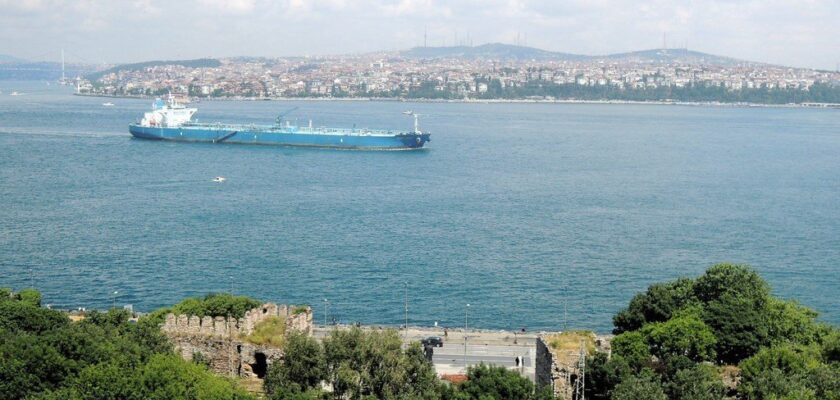Bosphorus Strait
Bosphorus Strait is an amazing geological phenomenon of our planet. This sea artery, cutting a 30-kilometer isthmus between Europe and Asia, connects two seas – the Black Sea and the Sea of Marmara, which are part of the Mediterranean basin. The average width of the Bosphorus is 2 kilometers and the minimum width is 700 meters, making it the narrowest strait on the planet.
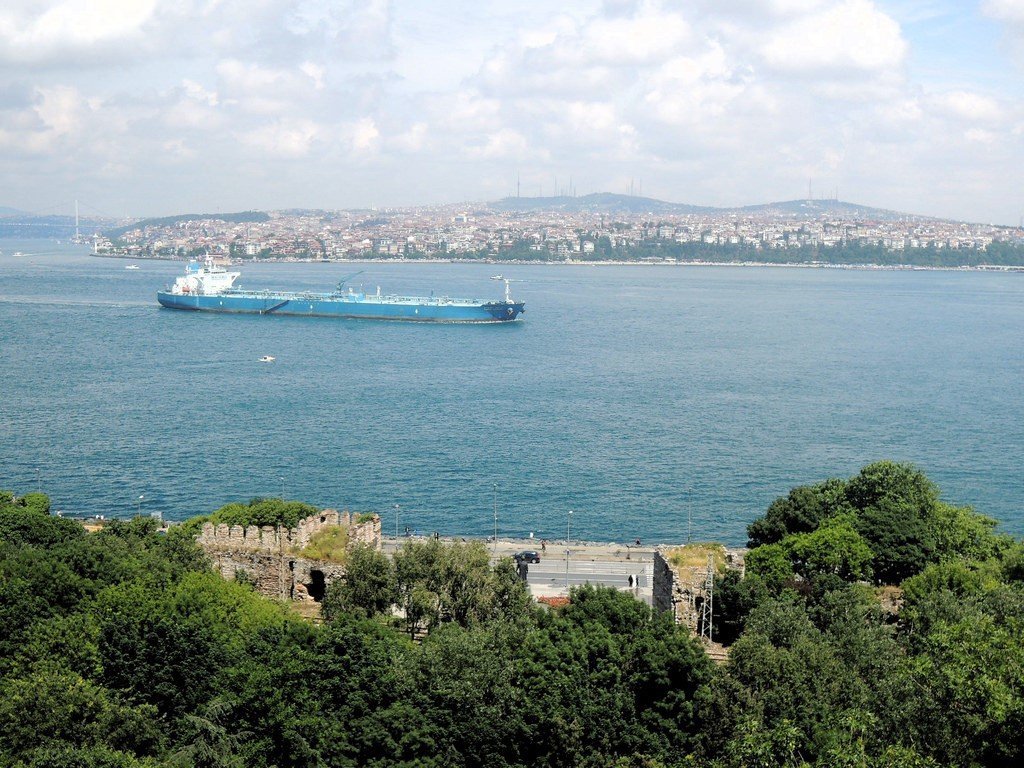
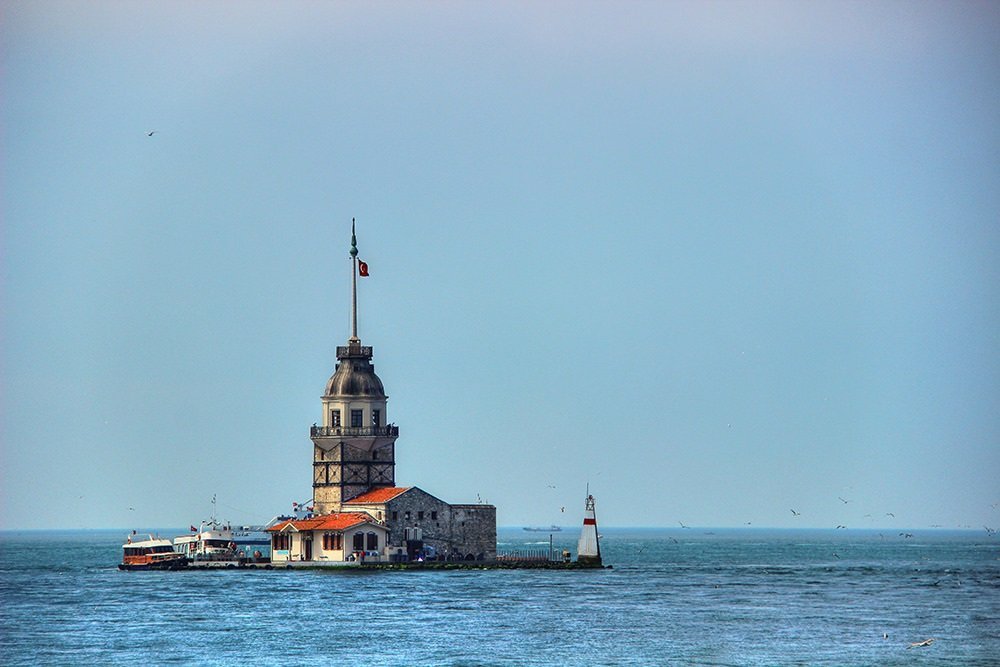
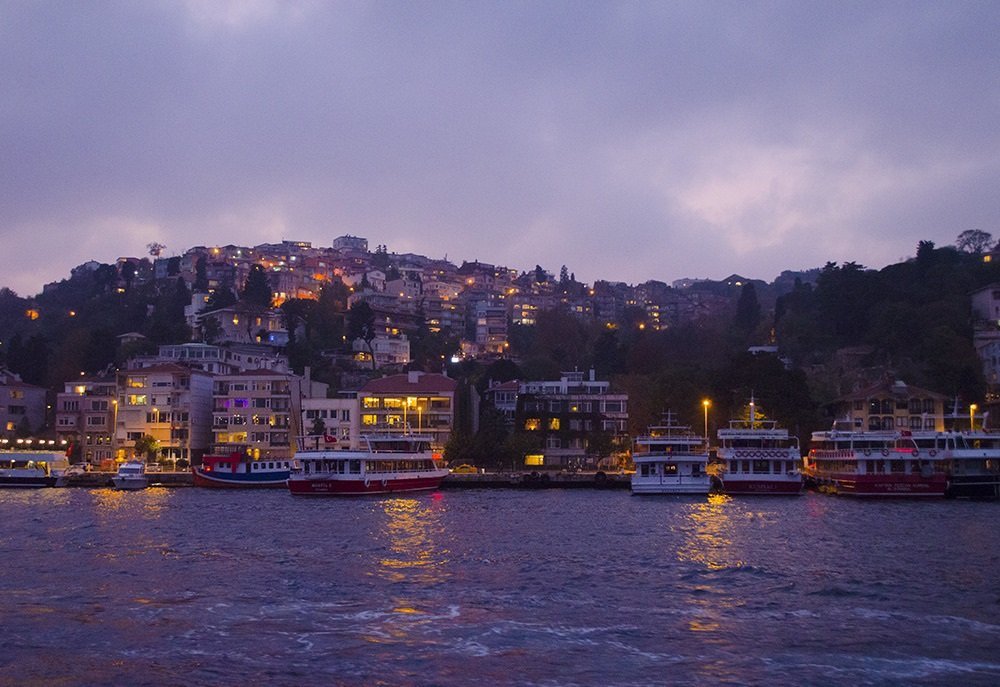
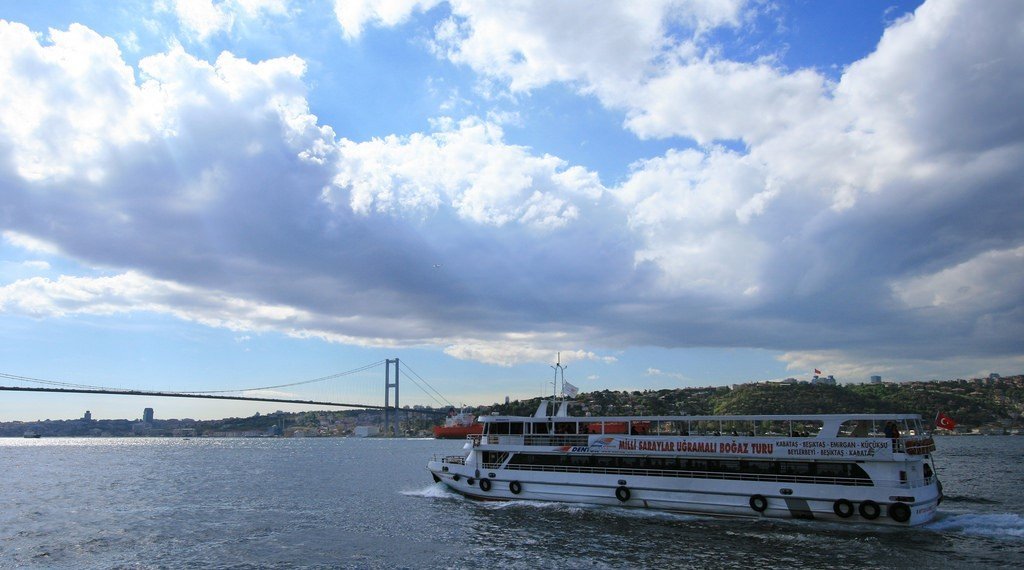
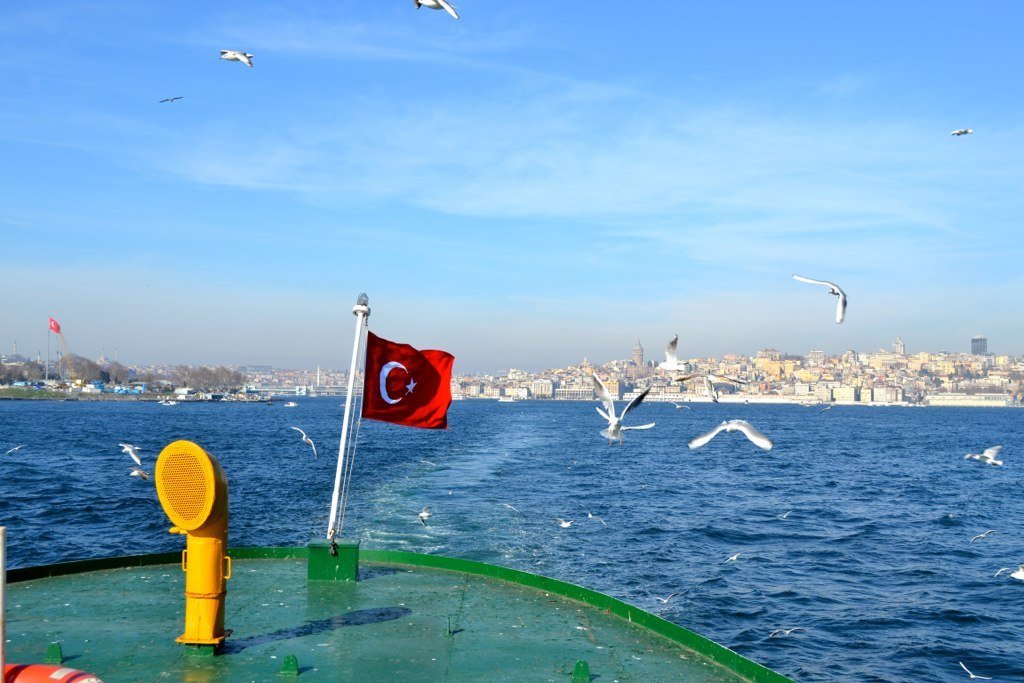
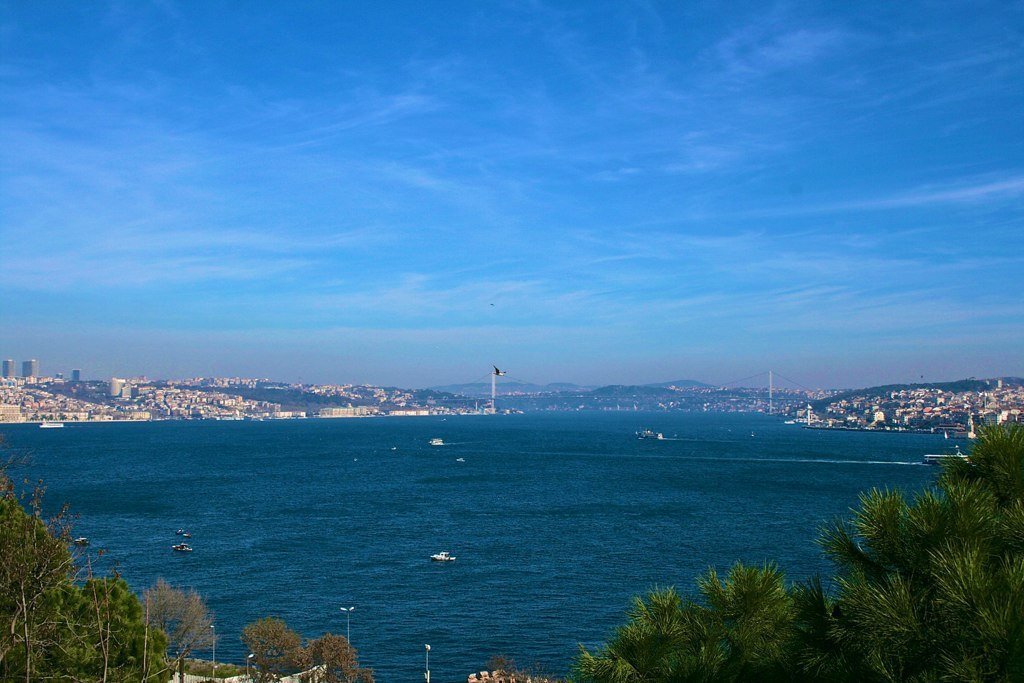
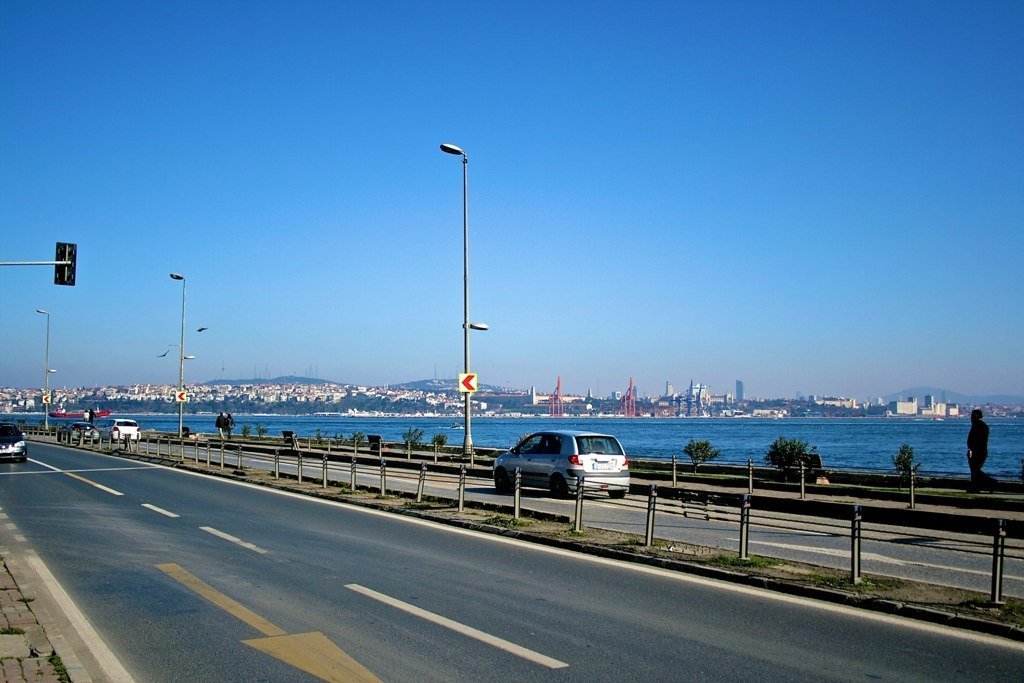
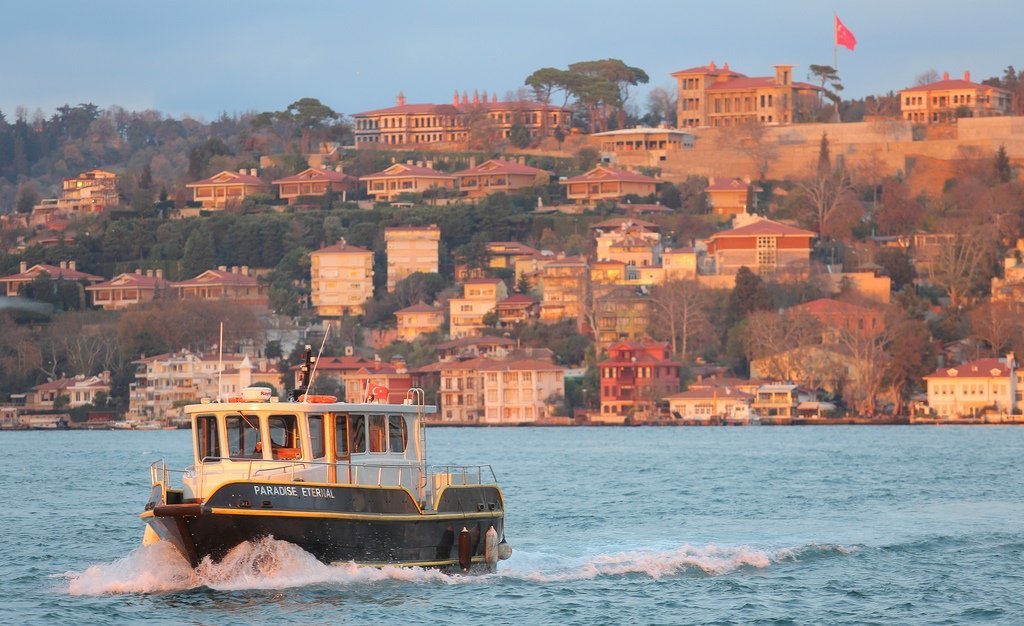
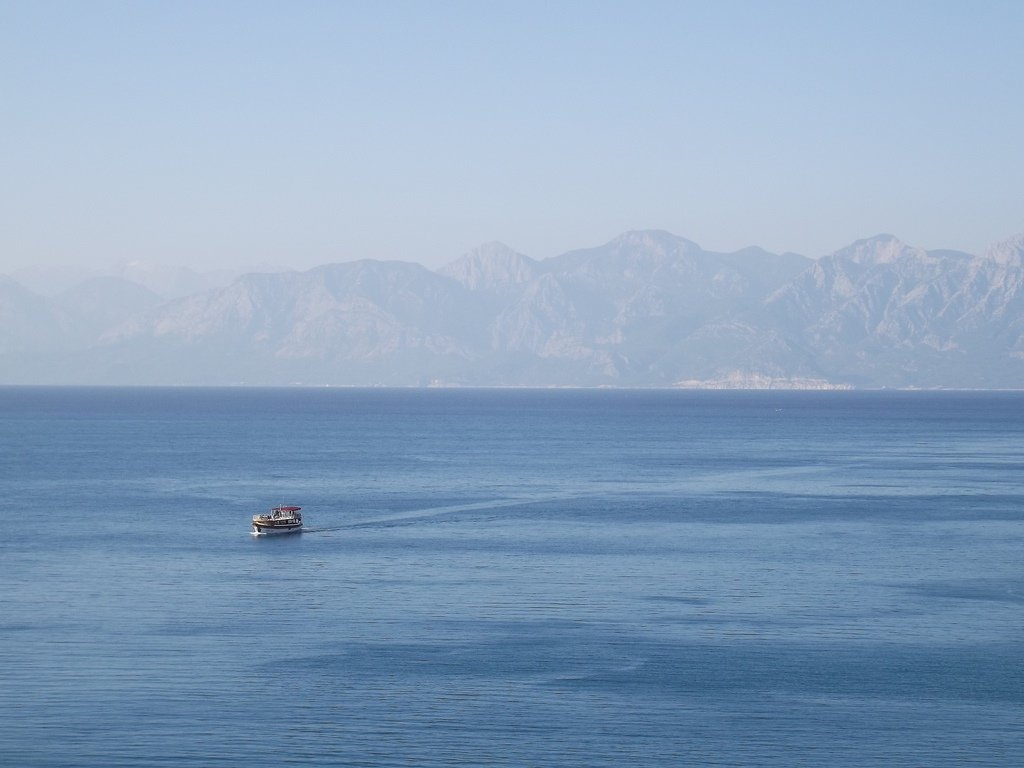
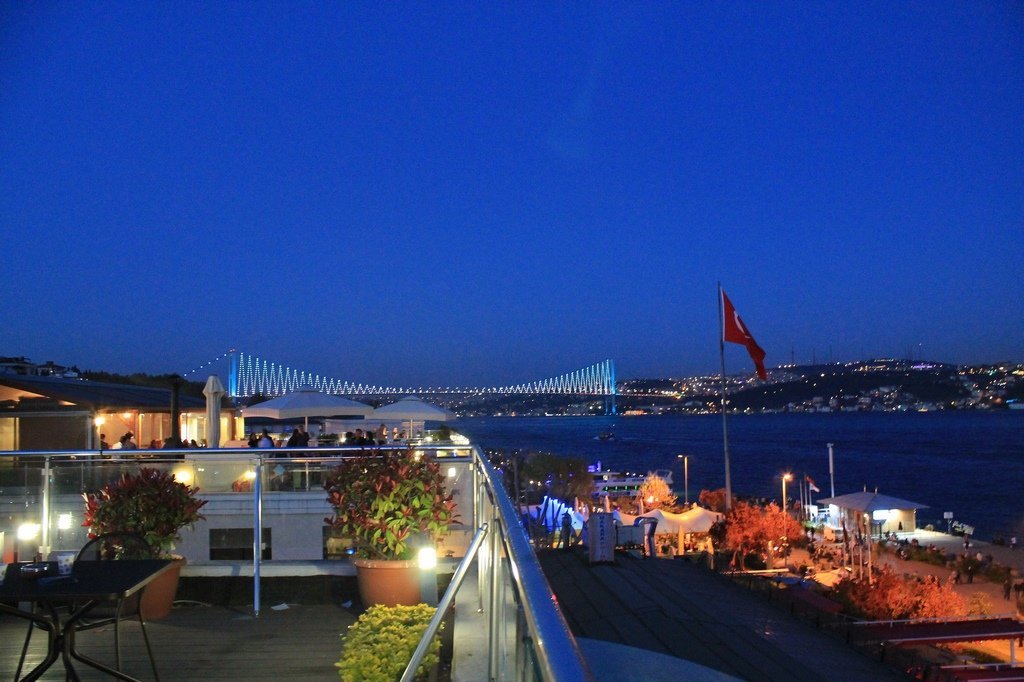
Video: Bosphorus Strait
Contents- Highlights
- History
- Climate, Relief and Navigation
- Bridges over the Bosphorus
- From the Black Sea to the Sea of Marmara
- Mini cruises
- Bird’s-eye view of the Bosphorus
- Beaches
- Hotels overlooking the Bosphorus
Highlights
The Bosphorus is located in the territory of Turkey. Its strategic, military and economic importance for the Black Sea and Mediterranean countries is obvious. The passage of merchant and warships through the Bosphorus and Dardanelles Straits is regulated by the International Law of the Sea and an international convention adopted in 1936. For passage through the straits, ship owners pay a beacon fee to maintain the work of navigational signs, by which the captains are guided. About 50,000 large and small ships pass through here in a year.
.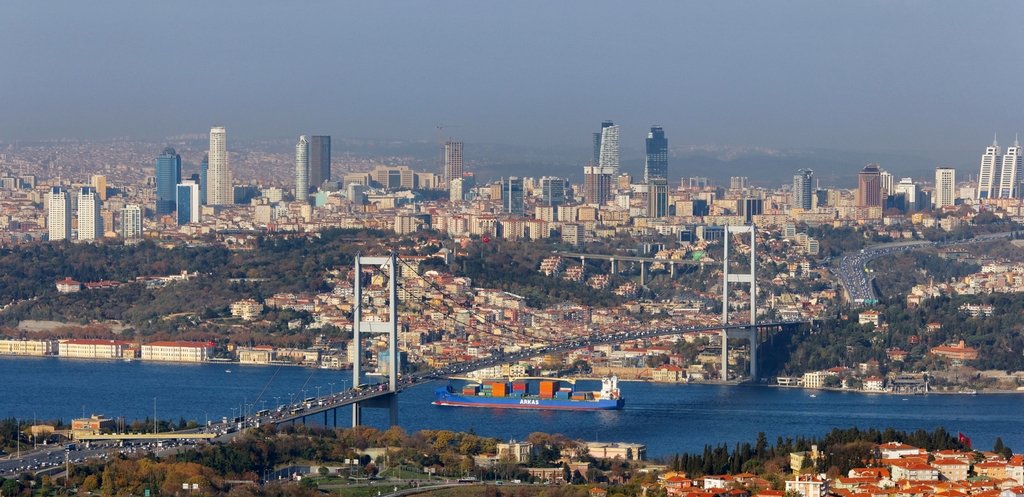
At the southern tip of the Bosphorus lies Turkey’s largest metropolis, Istanbul, home to more than 13 million people. It is the only city in the world lying in both Europe and Asia. Well-preserved monuments of different epochs attract tourists from all over the world to Istanbul. Here the Bosphorus is crossed by automobile bridges, and transportation tunnels with city communications are laid under the strait. Istanbul’s city port of Karaköy is the main departure center for Bosphorus cruises.
.History
Long ago, images taken from Earth orbit showed that both banks of the Bosphorus Strait are identical in outline, like the edges of a broken carrot. This means that a great tectonic catastrophe once occurred here. Scientists believe that about 10 thousand years ago, when the glaciers of the next period of cooling on the planet melted, the waters of the Atlantic Ocean rushed into the Mediterranean Sea, flooding many inhabited islands, and then broke through a narrow gap in the rocks, and collapsed into the Black Sea basin, the level of which was several hundred meters lower. The breakthrough of the rocks was facilitated by the fact that part of the present Bosporus was once a river valley, which had already “gnawed through” the rocks. Perhaps a powerful earthquake contributed to this cataclysm: the Bosphorus region is seismically unstable. Many researchers suggest that it was this catastrophe, which raised the waters of the world’s oceans all over the planet, is described in the Bible as the Flood.
.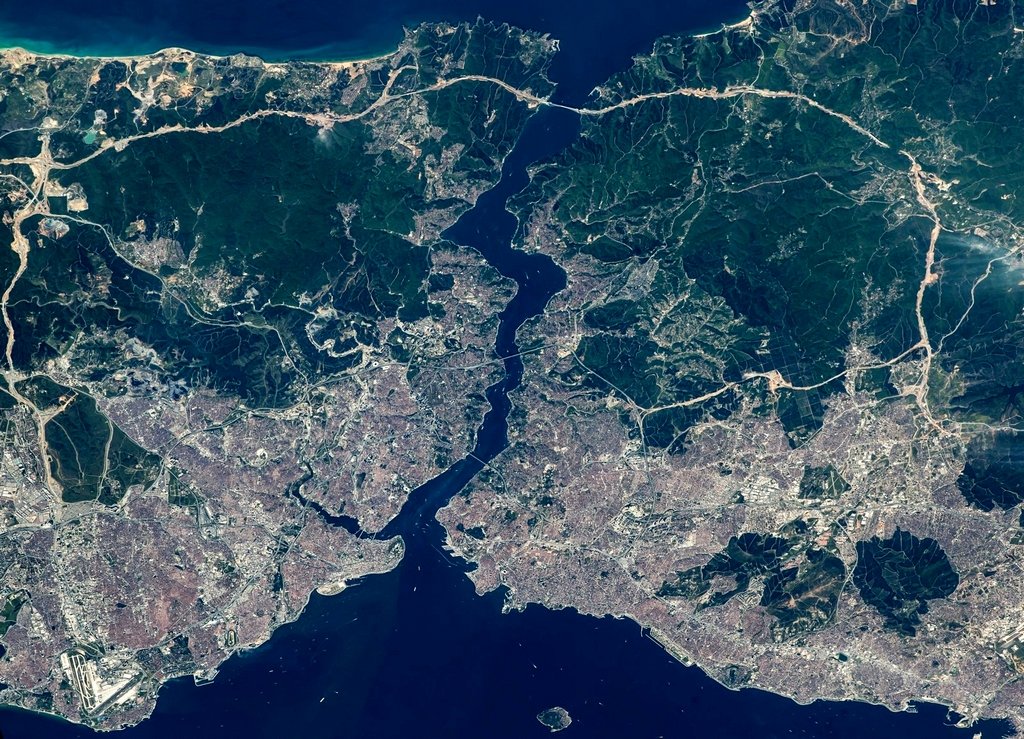
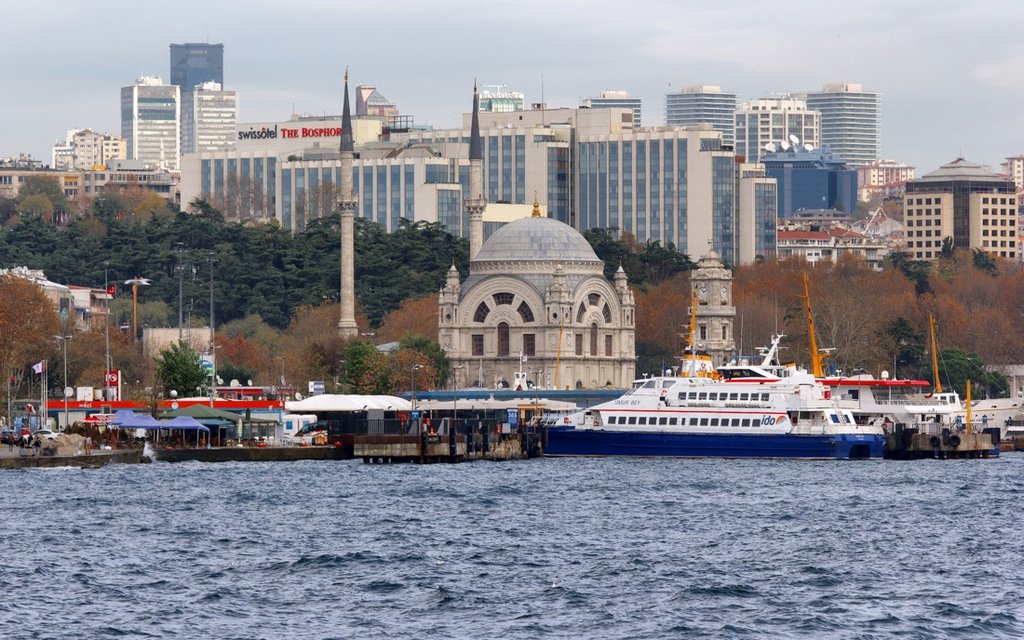
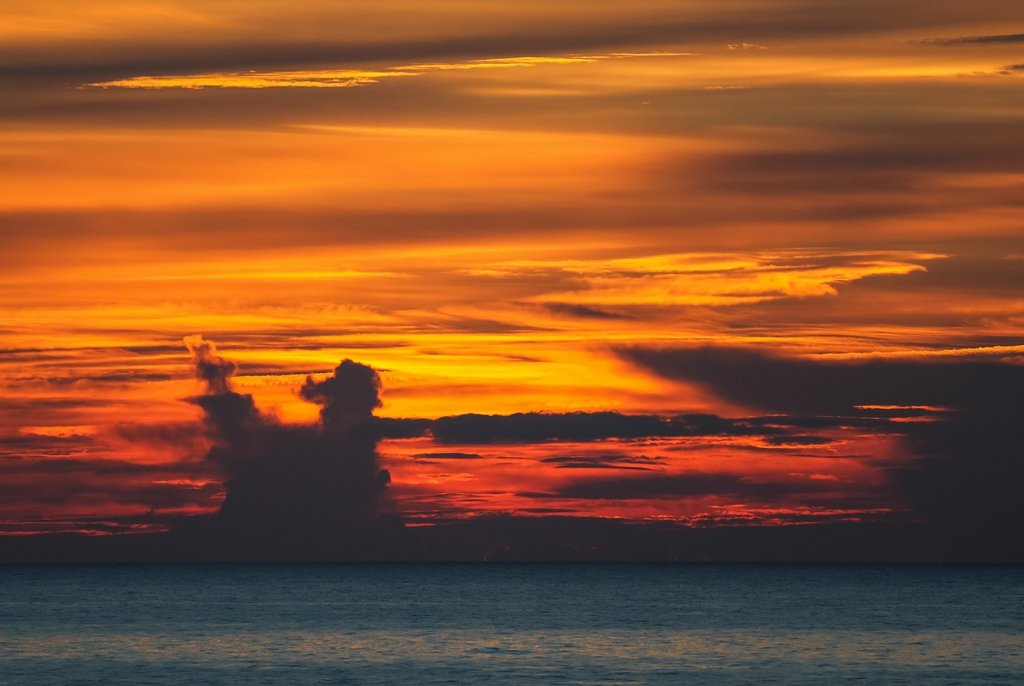
Climate, topography and navigation
The Bosphorus is located in the zone of coastal subtropics, in this region, the temperature rarely drops below +5 °C even in the coldest months, January and February. Spring comes here in early April. From the end of May till October the air temperature fluctuates within +19…+25 °С, reaching +31…+32 °С in August-September. This is the best period for traveling along the Bosphorus.
.In summer, the water on the surface of the strait warms up to +23…+26 ° C, but the temperature of the deep current is always a few degrees lower. In winter, the water temperature in the Bosphorus is +5…+8 ° C. At the end of winter – beginning of spring the weather over the Bosphorus is unpredictably capricious, along the precipitous shores there are squally gusts of icy wind. Very rarely extreme cold comes from the north, and the strait is covered with ice. Byzantine chronicles testify that the Bosporus Strait froze in the winter of 401. The last freezing of the Bosphorus is described in the Turkish chronicle, it happened in February 1621. In the spring of 1954, the strait was blocked by ice brought by the Black Sea storm from the mouths of the Danube and Dnieper.
.
The water levels in the Black Sea and the Mediterranean Sea are different, the salinity of the water is not uniform, so there are strong currents in the narrow, winding Bosphorus. The upper current is directed from north to south, it moves water at a speed of about 2 meters per second from the Black Sea to the Marmara Sea, and the deep current is directed in the opposite direction, and at the coast it comes to the surface. Whirlpools are formed where the multidirectional water flows collide. Especially dangerous for navigation are the turbulent waters of the Bosphorus at the steep bend of the strait’s banks about 10 kilometers from the Black Sea mouth. The fishing town of Sarıyer is located in this place. The depth of the fairway in the strait varies from 20 to 110 meters, which is sufficient for the passage of the largest ocean-going vessels.
.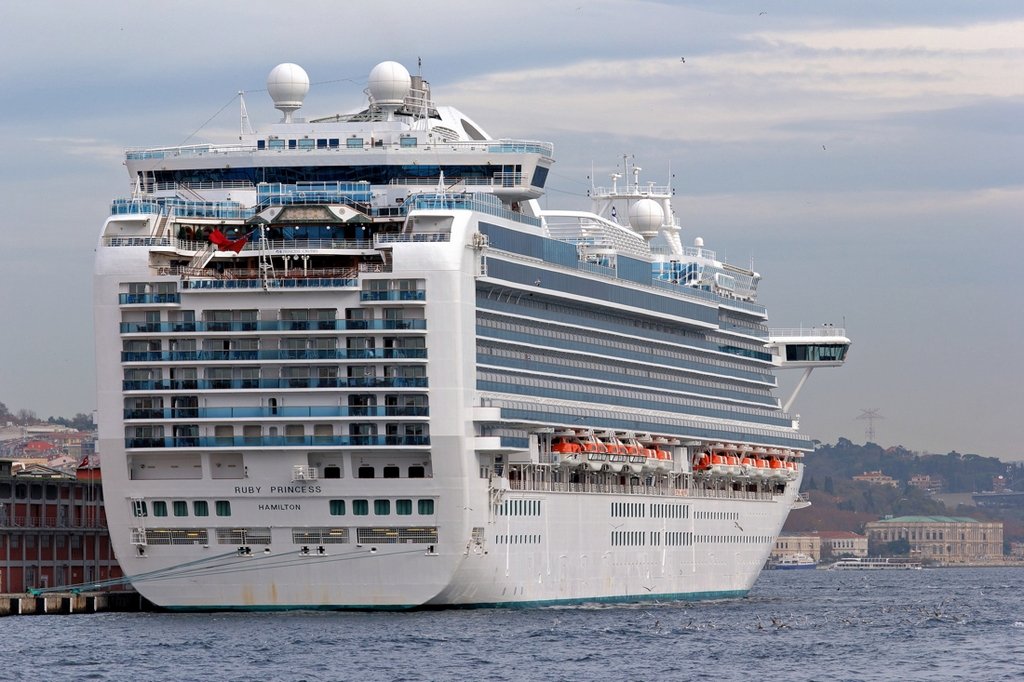

The shores in most of the strait are rocky and steep, but there are areas with a gentle shore. There are several bays in the strait, with the Golden Horn Bay in the city limits of Istanbul being the most deeply cut into the European shore. Several small rivers flow into the Bosphorus, two of them flowing from the Balkan Plateau into the Golden Horn.
.Bridges over the Bosphorus
According to Herodotus, the first pontoon bridge over the Bosphorus was built in 514 BC by an engineer from the island of Samos named Mandrocles. The bridge was ordered to be built by the Persian king Darius, who was on his way to conquer Scythia with a huge army. Twenty-five years later, his son Xerxes decided to conquer Greece. Two bridges that had been built by Egyptian and Phoenician engineers were destroyed by the current. Then the angry king himself whipped the Bosphorus with a whip. After the execution, the strait “came to terms”, and on the third bridge the Persian troops crossed to their doom in Europe. The battle of Marathon awaited them.
Since that time, for many centuries the Bosphorus has been crossed only by boats and ferries. The great depth and strong currents did not allow the installation of bridge supports in the channel. Only in 1973 the problem was solved and the first Bosphorus bridge crossing connected the banks of the strait. Its supports are installed on the shore and the roadbed is suspended on cables. The second cable-stayed bridge was erected in 1988..In the north of the Bosphorus, at the exit to the Black Sea, the nearly one and a half kilometer long Sultan Selim Bridge was completed in 2016. Rail and road traffic is now open here.
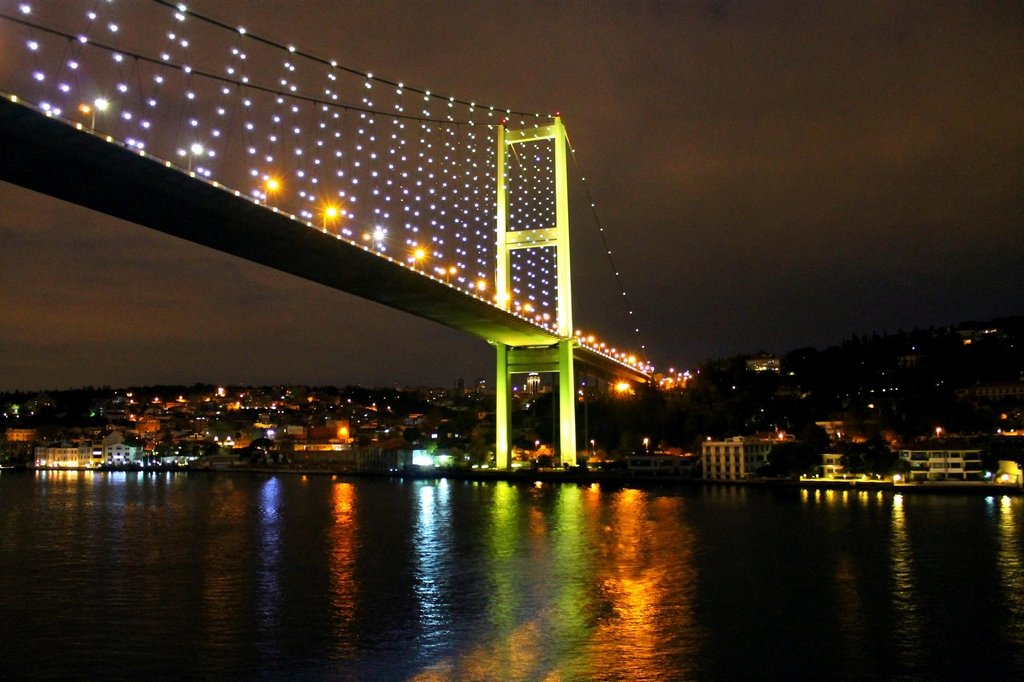
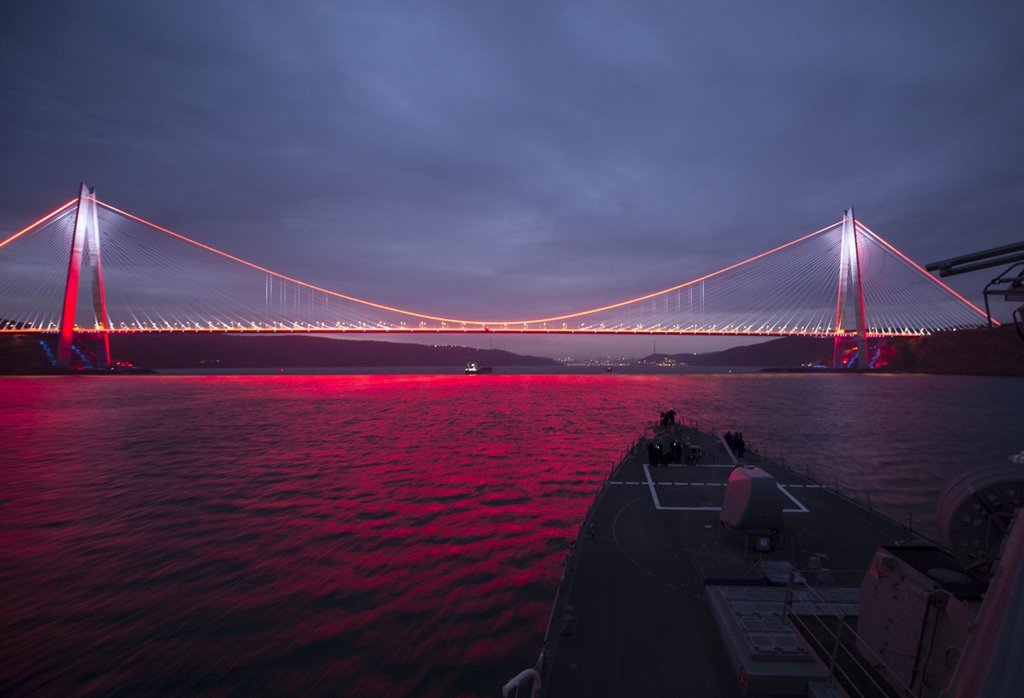
In addition, two tunnels, the Marmaray railroad tunnel (2013) and the Eurasia road transport tunnel (2016), have recently been built under the waters of the strait.
>The Turkish government’s plans do not stop there. In the spring of 2017, the symbolic stone of the new cable-stayed bridge “Çanakkale” was laid at the southern end of the Bosphorus near the Sea of Marmara, which will be the longest in the world.
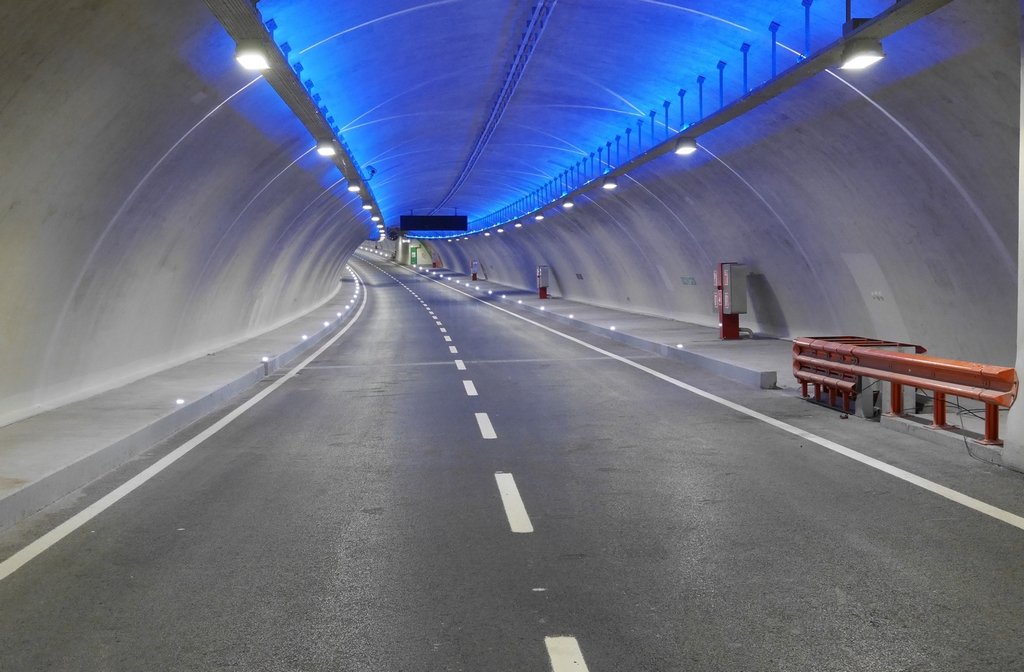 ‘ Eurasia Tunnel
‘ Eurasia Tunnel
From the Black Sea to the Sea of Marmarae
You will discover the Bosphorus by going on a sea voyage aboard a motor ship from the Black Sea ports to Turkey or further to other Mediterranean countries. From Russia such a cruise can be made from the port of Sochi. But this is not the only option. The world is open, and nothing prevents you from buying a sea tour on the Bosphorus on a passenger liner or ferry, for example in Bulgaria or Romania.
.
Passage of passenger ships on the Bosphorus is free, it is not necessary to use the services of a pilot, and experienced captains lead cruise ships on their own. Speed is limited to 10 knots (about 18 km / h), and this gives a great opportunity to view the picturesque surrounding shores. When the strait is particularly busy with sea traffic or bad weather, ships entering from the Black Sea take Turkish guides on board. The pilot base is located at Cape Fil.
.The northern entrance to the strait is marked by two ancient lighthouses erected on the European and Asian shores. At the left bank silently swaying on the waves a few gray-blue warships. Here is a Turkish naval base guarding the entrance to the Bosphorus from the Black Sea.
.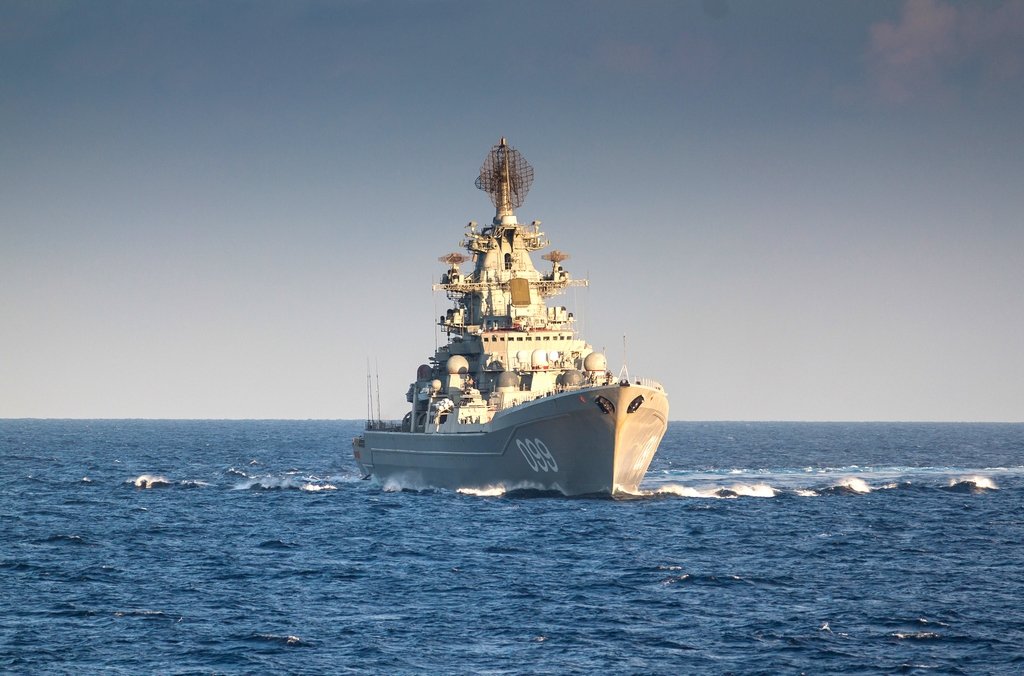
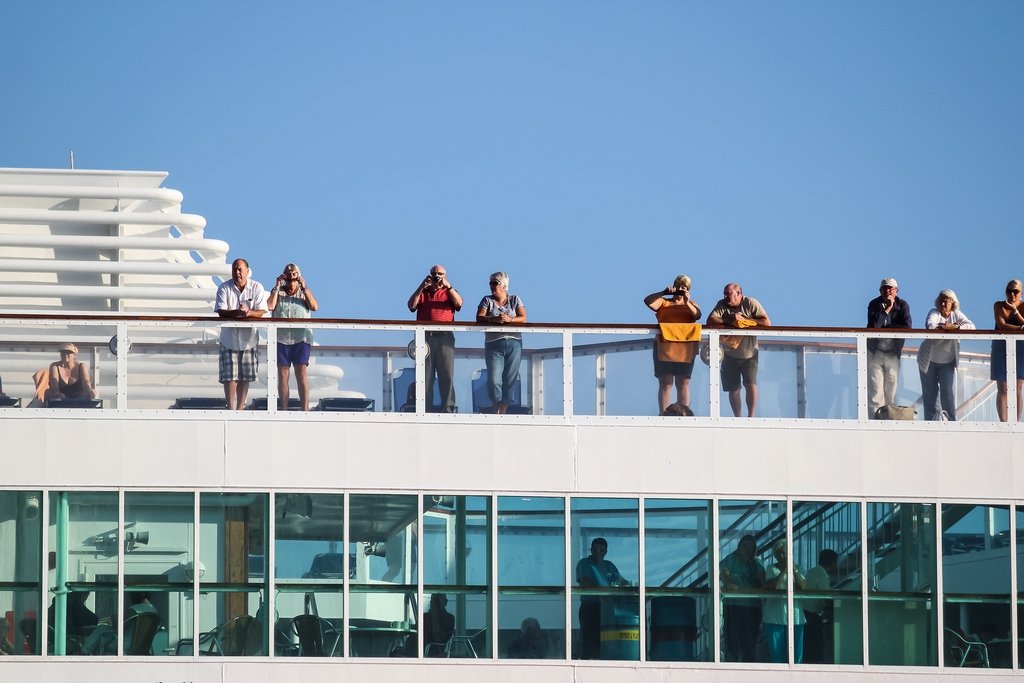
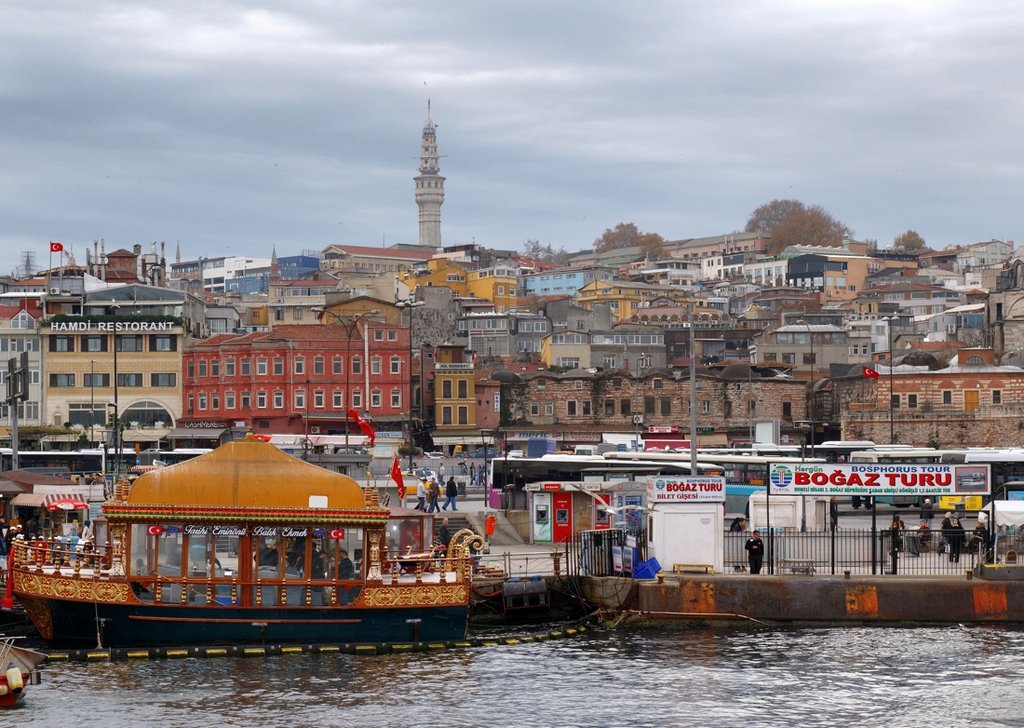
The first landmark of the Bosphorus you will see from afar. It is the colossal Sultan Selim Bridge, among cable-stayed bridges it is the widest on the planet. The width of the bridge bed is 59 meters. There are eight lanes of automobile traffic and two railroad tracks. The height of its 322-meter pylons has not been surpassed yet. From the deck of a ship, the cables holding the bridge above the water look like spider webs, it is hard to believe that the weight of the steel ropes exceeds 28,000 tons.
.
At the beginning of the strait, the green banks are high, but fairly gentle for getting down to the water. Soon they are replaced by harsh, impregnable cliffs with sparse trees growing from crevices in the cliffs. Above, the surface of the banks is covered with dense forests. These places are almost untouched by civilization. Such they were seen even the legendary Greek Argonauts, who sailed to the Black Sea Colchis for the magical Golden Fleece..
Closer to Istanbul, villas and palaces appear on both banks, surrounded by parks and gardens. In August, their fruity aroma can be smelled even on the deck of a passing ship. Many of these estates were built for recreation even aristocrats of the Ottoman Empire in the XVIII-XIX centuries. About 300 residences received the status of architectural monuments. Soon there are so many villas that they begin to crowd together, climbing the terraces of high banks higher and higher. Balconies of coastal buildings overhang the water. Music and laughter can be heard from the open windows, and behind the wide panoramic windows the owners lead their usual life – dining, playing backgammon, watching TV, not paying attention to thousands of curious gazes from the decks of very close passing motor ships. Dacha owners sunbathe on the terraces facing the water, they will wave their hands in return. Yachts and boats of country dacha owners are moored right at the door to the house, this part of the Bosphorus is a bit like Venice.
.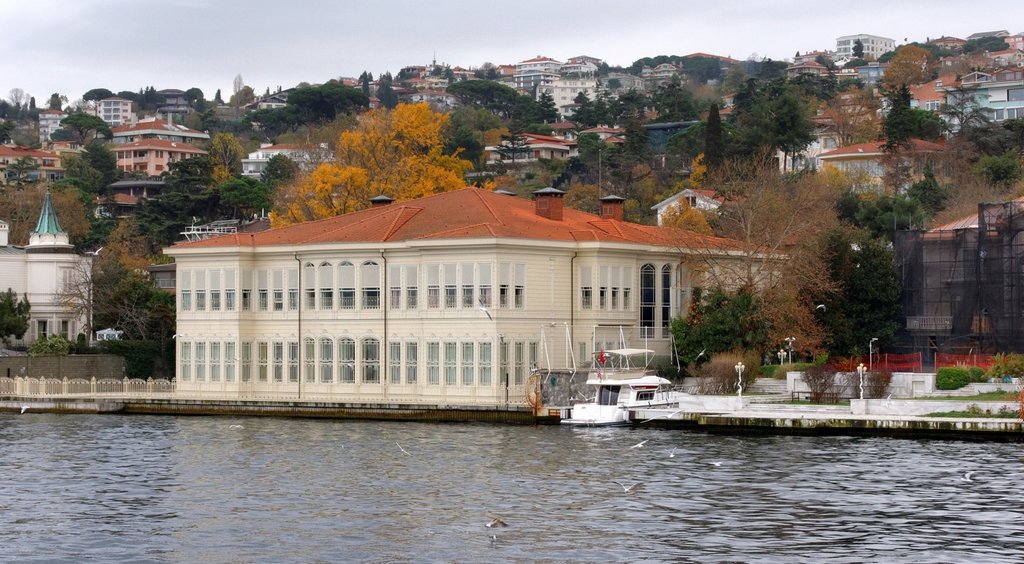
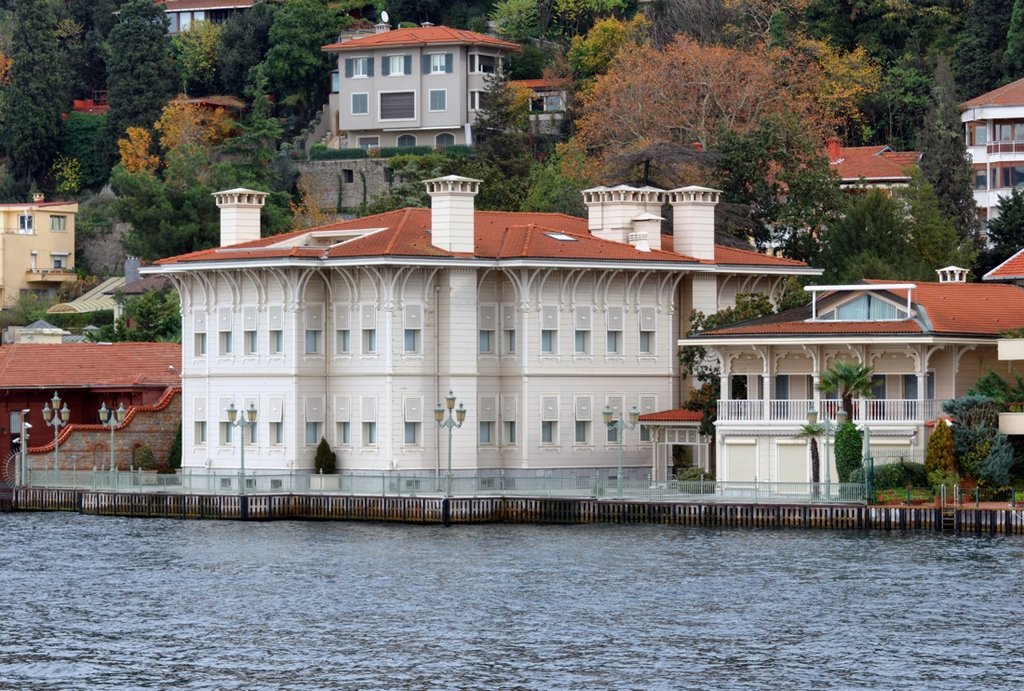
As soon as the cruise ship enters the confines of Istanbul, the panorama becomes completely different. Here the shores are densely dotted with thousands of buildings, rising in an amphitheater on the steep left bank, and tightly covering the more gentle right bank. Squat domes of mosques and hundreds of minarets rise above the city, growing out of the greenery of the parks.
.
On the right, the mighty walls and towers that surrounded medieval Byzantine Constantinople float by. Few of the buildings of the fallen empire have survived. Survived the pearl of Byzantine architecture and the sanctuary of the Christian Church – the Cathedral of St. Sophia, rising on the right bank of the Bosphorus. A little further south, the cathedral is rivaled by the huge Blue Mosque, built by order of Sultan Suleiman. Closer to the water’s edge, you can see the Topkapi Palace complex, where several generations of Turkish sultans lived. Now there are world-famous museums located here. The ancient church of St. Irene (IV century), built by Emperor Constantine on the hill where the city of Byzantium was founded, is built into the fortress structures. In this temple was stored kilometer-long bronze chain, locking the Bosphorus in front of enemy ships. Further on the shore is clearly visible drowning in gardens Dolmabahce Palace, built later in the Baroque style. Not far away is the Rumelihisar fortress, and across the strait is its twin, the Anadoluhisar fortress. Here the Bosphorus narrows, and the cannons of the fortresses gave no chance for ships to pass through without permission.
.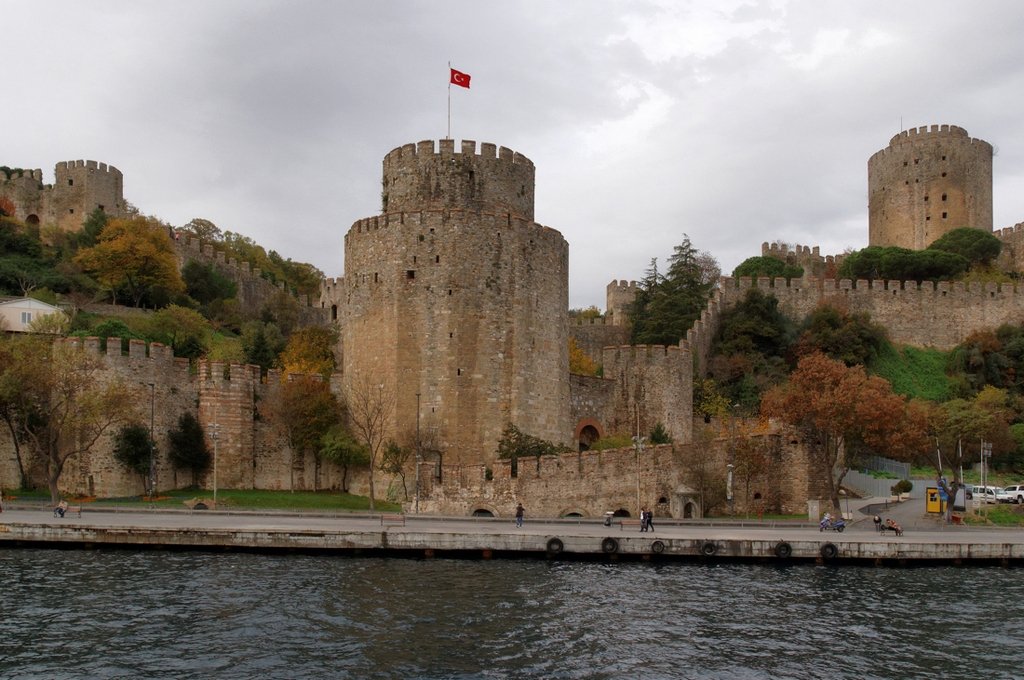
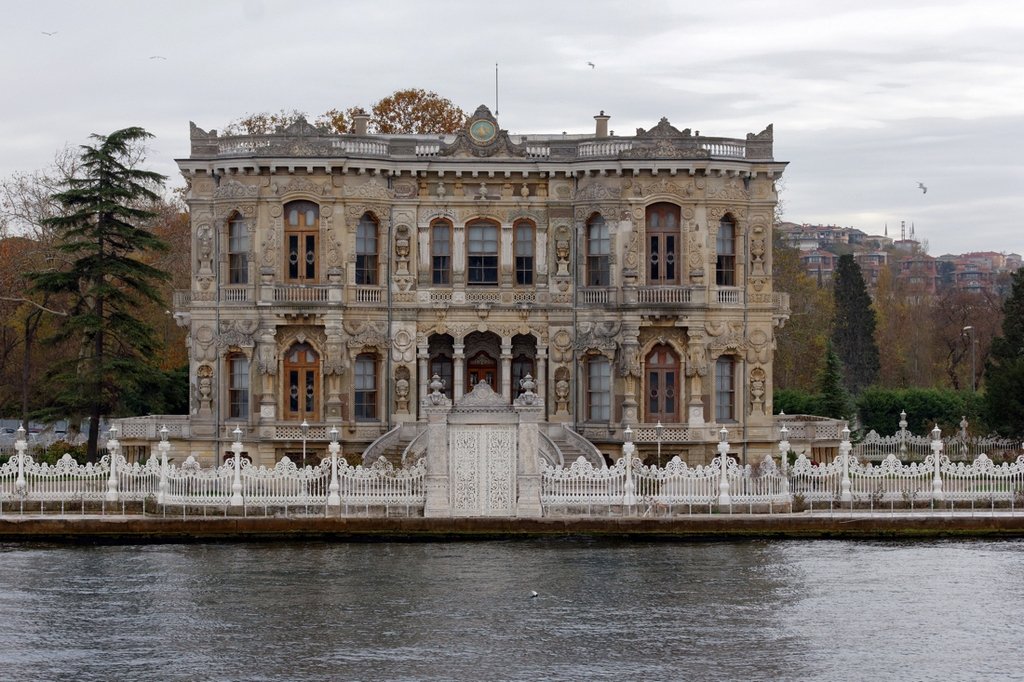
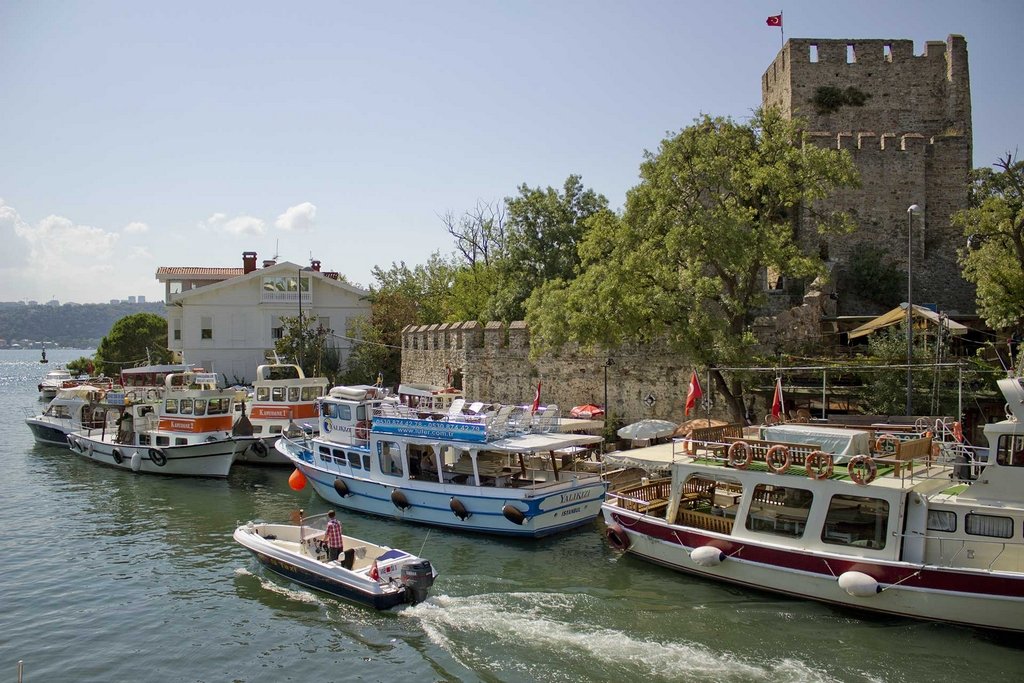
The Golden Horn Bay is surrounded by many historical monuments and resembles a curved Turkish dagger deeply embedded in the rocky European coast of the Bosphorus. The length of the bay is 12 kilometers. Since ancient times it has served as a military and commercial harbor. Here has always been a lively city center, no matter how it was called – ancient Byzantium, medieval Constantinople, Sultan’s Istanbul. There are hundreds of piers in the Golden Horn Bay, and each one sells freshly caught fish.
.The shores of the bay are connected by four bridges, the most famous of which is the Galata Bridge. This colorful bridge is bustling with life: on the upper level in eternal congestion go cars, along the fences stand with fishing rods, there are also laid out the most unexpected goods “flea market”. On the second tier, above the water, there are dozens of small restaurants and cafes offering delicious dishes of fish, shrimp and other seafood. Everything is the freshest, caught in the Bosphorus and the Sea of Marmara in the morning. Visitors can choose their own fish on the ice display case and it will be cooked immediately. And dorada, herring, sea bass are caught on spinning rods by restaurant fishermen here. There is a good choice of such delicacies in the restaurant “Balik Noktasi”. Yachts often approach it to pick up lunches ordered by phone for passengers. The waterfront is dotted with similar establishments. Often inexpensive cafes are set up right on moored fishing boats.
.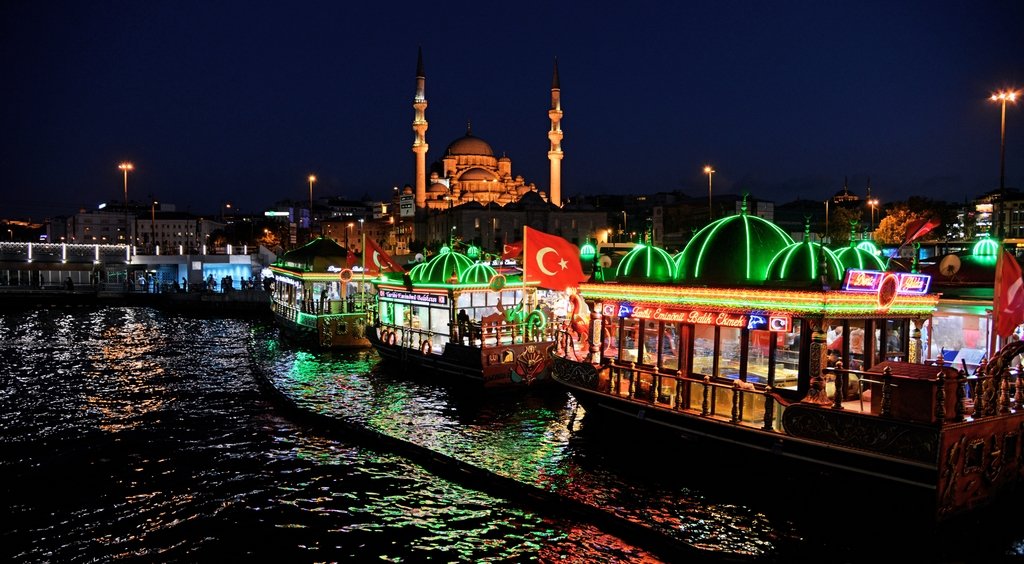
Southwest above the bay, in the ancient neighborhood of Fener, is the residence of the Ecumenical Patriarch of Constantinople. It is a large complex of buildings and temples. In the church in the name of the Great Martyr George stands the patriarchal pulpit darkened by time. It was transferred here from the cathedral of St. Sophia, which was the main temple of the Orthodox world before the Turkish conquest. At the iconostasis there is a marble column with a relic brought by Empress Helen from Jerusalem in 326. It is an iron ring to which Jesus Christ was chained before his crucifixion. The remains of Church Fathers John Chrysostom, Gregory the Theologian and other saints are kept in the tombs.
.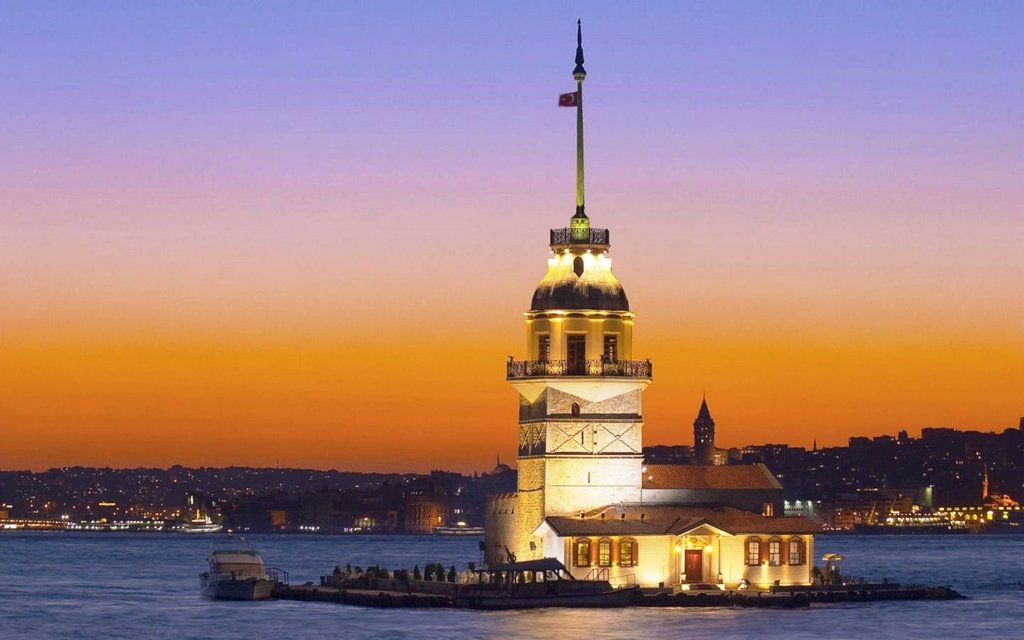
Next, you pass the Bosphorus Bridge, viewing the colorful panoramas of the eastern city. After a couple of kilometers, the strait suddenly widens and the azure Sea of Marmara, dotted with silhouettes of ships waiting for their turn to pass through the Bosphorus, comes into view.
>
Bosphorus cruises end at the pier of the village of Anadolu Kavaji, on the coast of Asia Minor. There are many fish restaurants here, where tourists enjoy dining after their sea voyage.
.
Mini Cruises
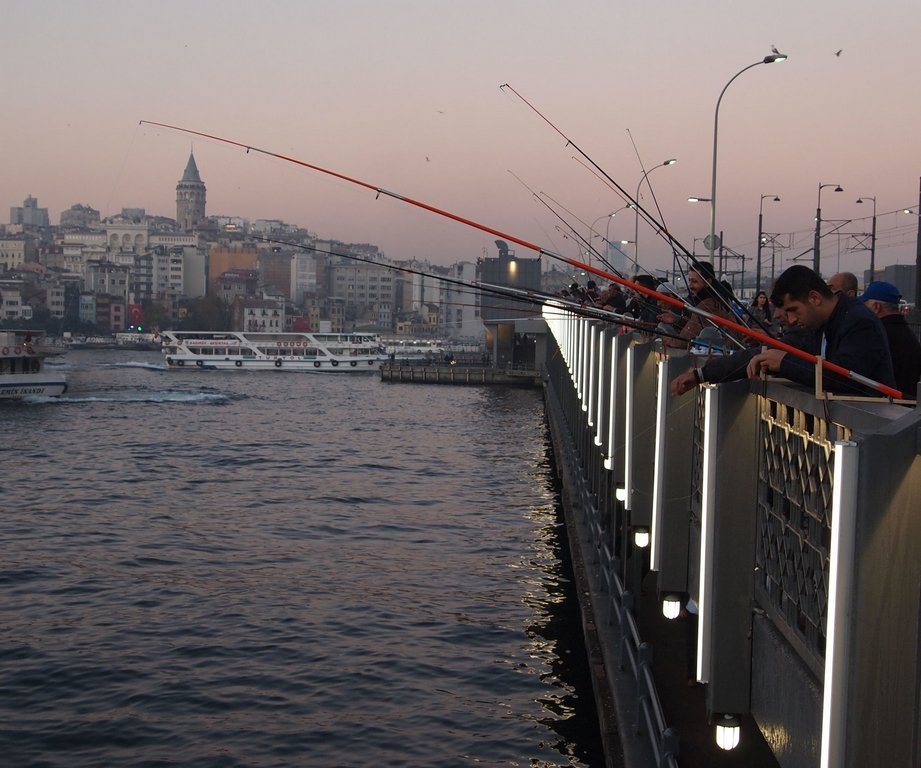
Beaches
The lively ship traffic in the Bosphorus raises doubts – is it safe to swim in the strait? City dwellers argue that a dip in the heat won’t hurt a bit, as the water here is flowing. Inevitable pollution from hundreds of ships is quickly carried away by the current. The difficulty is that almost the entire embankment is built up either by roads or houses. A nice place for swimming called Arnavutköy is on the European shore, about midway between the bridges over the Bosphorus. You can get there by ferry from the Kabataş pier or by any bus along the waterfront. There is a poorly landscaped small beach called Küçüksu on the Bosphorus within Istanbul. Entrance to it is free.
.To enjoy a beach vacation, you should take a bus or metro to the Sea of Marmara. There are good city beaches on both sides of the Bosphorus, but they are far from the resort coastlines of Antalya or Marmaris.
.
Hotels overlooking the Bosphorus
Several dozen hotels in Istanbul boast panoramic views of the Bosphorus. Among the best are The Ritz-Carlton Istanbul at the Bosphorus (from €150/day, restaurant offers Ritz-Kids menu), Swissotel The Bosphorus Istanbul (from €183/day).
. There are hotels overlooking the Bosphorus Strait that offer more democratic rates. Not far from the Galata Tower on the shore of the Golden Horn Bay, the Nordstern Galata Hotel is housed in an old building. Guests dine on the veranda overlooking the bay. Accommodation costs from €85 per night..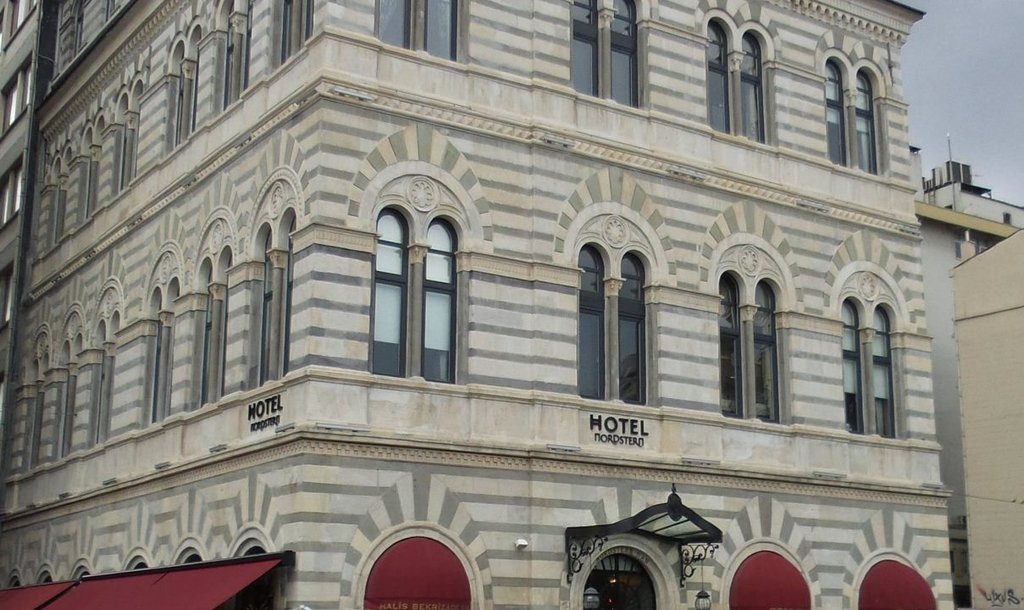

In the Beyoğlu neighborhood, on a hill above the Bosphorus, is the Hilton Garden Inn. Very close – the famous pedestrian street Istiklal with its ancient monuments and popular nightclubs. The cost of accommodation in a standard double room is from € 40 to € 85.
.On the opposite bank of the Bosphorus, in the Kadıkei district, there is another hotel of this international chain – “Double Tree by Hilton Istanbul – Moda”. The cost of a standard double room ranges from €40 to €83 per night.
.
The Kalyon Hotel Istanbul, located on the waterfront in the Fatih district, offers views of both the Bosphorus and the Sea of Marmara. There is a lovely garden on the property. The Hagia Sophia Cathedral and other monuments in the center are no more than a 10-minute walk away. A double room costs from € 80 per night.
.